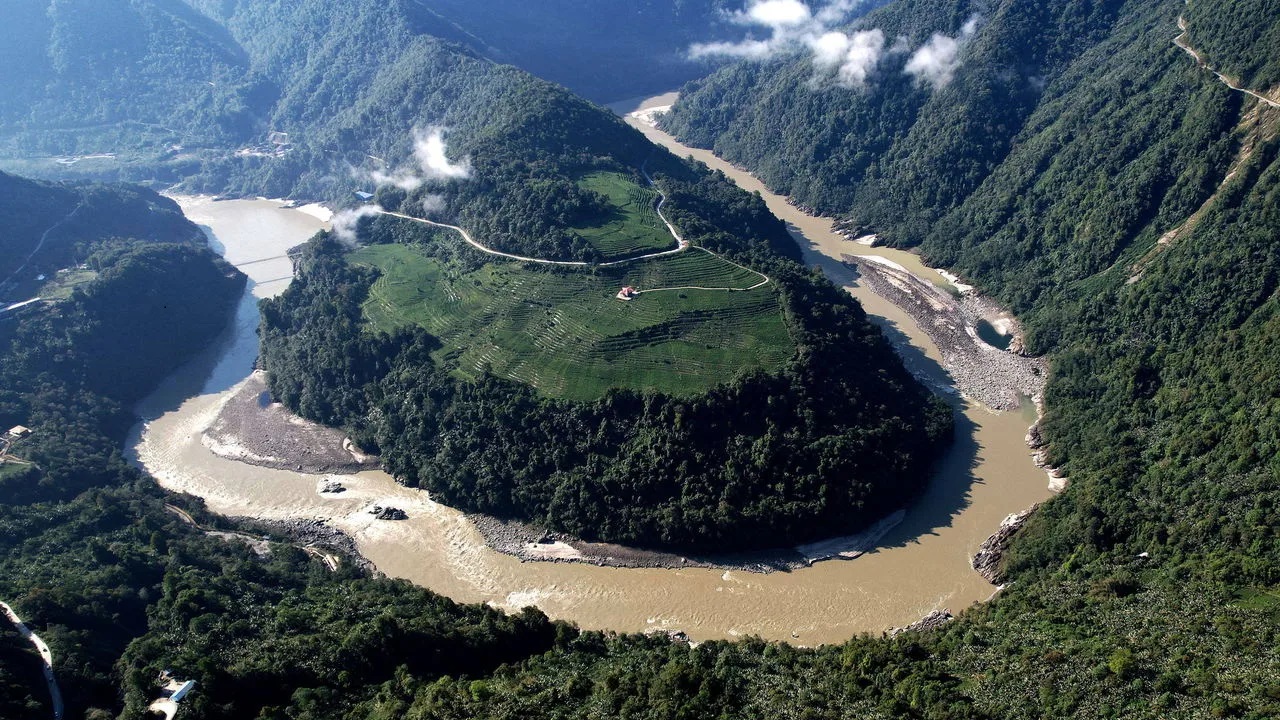Yarlung Tsangpo Hydropower Project: A Strategic and Ecological Challenge
Context
China has approved the construction of the world’s largest hydropower project on the Yarlung Tsangpo River in Tibet, with a capacity of 60,000 MW, which is three times that of the Three Gorges Dam. This massive project, located at the river's "Great Bend" in Medog County, aims to harness the steep descent of the river for electricity generation.
The Yarlung Tsangpo flows into Arunachal Pradesh as the Siang, becomes the Brahmaputra in Assam, and enters Bangladesh before draining into the Bay of Bengal. The project's scale and strategic location raise serious concerns for downstream countries, including India and Bangladesh, as it could significantly impact water flow, ecology, and millions of livelihoods.
Key Highlights of the Project
About the Project
- Capacity: 60,000 MW, making it the largest hydropower project in the world.
- Location: The "Great Bend" of Yarlung Tsangpo in Medog County, Tibet, where the river turns sharply before entering India.
- Plan Period: Part of China’s 14th Five-Year Plan (2021–2025) to enhance renewable energy production.
China’s Goals
- Achieving net carbon neutrality by 2060 by reducing reliance on conventional energy sources.
- Utilizing the river's steep descent for optimal hydroelectricity generation.
Impacts on Downstream Regions
1. Water Flow Disruptions
- The Brahmaputra system relies heavily on water from Tibet.
- Altered flow could disrupt agriculture and water availability in India and Bangladesh.
2. Silt and Biodiversity Loss
- Dams block the natural flow of silt, essential for fertile soil in agricultural regions.
- Changes in river morphology can harm biodiversity and local ecosystems.
3. Fragile and Earthquake-Prone Region
- Tibet is one of the world’s most seismically active zones.
- A large dam in such a region increases the risks of catastrophic failures.
- Example: The 2004 Parechu Lake landslide in Tibet caused a lake burst in 2005, despite mitigation efforts.
India’s Concerns
1. Lack of Transparency
- China has shown reluctance in sharing hydrological data consistently.
- Data interruptions were noted during events like the 2017 Doklam standoff and the 2020 Ladakh crisis.
2. Disrupted Agreements
- The Brahmaputra MoU (for data sharing) lapsed in 2023, and renewal is pending.
- The Sutlej MoU, established after the Parechu Lake incident, also needs renewal.
3. Questionable Claims
- China asserts that the project is “run-of-the-river”, implying minimal water storage.
- However, India views this claim with skepticism, given the scale of the project and potential impacts.
Strategic Options for India
1. Strengthen Coordination Mechanisms
- Renew existing MoUs and push for comprehensive data-sharing agreements.
- Advocate for adherence to international principles like equitable water use.
2. Public Diplomacy and Awareness
- Actively counter China’s narrative that the dam will have no downstream impacts.
- Highlight potential risks to ecology and livelihoods at global platforms.
3. Elevate Water Issues in Bilateral Talks
- Make water concerns a priority in India-China relations.
- Clearly convey that disregarding India’s interests could harm bilateral ties.
4. Regional Collaboration
- Collaborate with Bangladesh and other affected nations to form a unified strategy.
- Work with international bodies to emphasize the risks posed by such large-scale projects.
Conclusion
The Yarlung Tsangpo hydropower project represents both a technological achievement and a significant ecological challenge. For India, proactive engagement, robust agreements, and strong public diplomacy are essential to address the risks posed by this project. Ensuring regional cooperation and environmental sustainability must remain at the forefront of India’s strategy.




Comments (0)